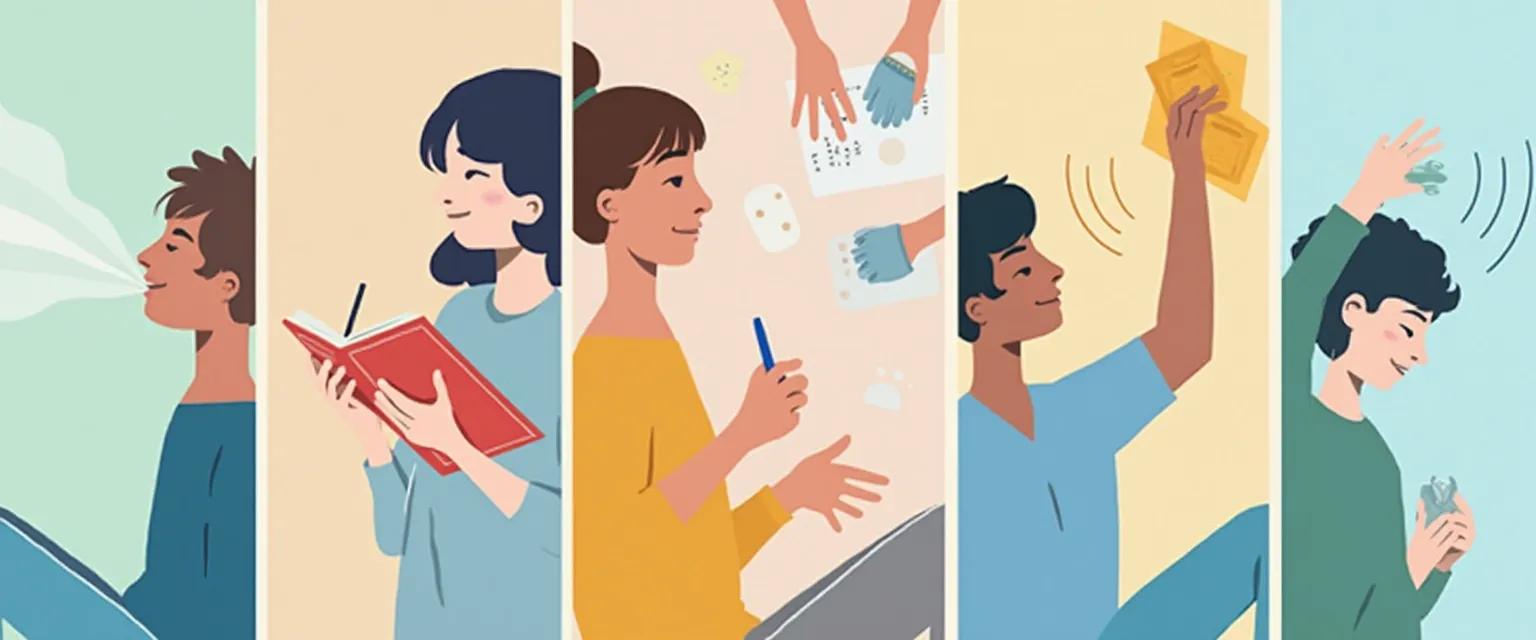Mindful Moments for ADHD: 7 Micro-Practices for Better Focus and Calm
Ever felt like traditional meditation and ADHD just don't mix? You're not alone. The relationship between mindfulness and ADHD can seem contradictory – sitting still and focusing when your brain is naturally wired for movement and variety feels like swimming upstream. But what if there was a way to practice mindfulness that works with your ADHD brain instead of against it?
Science shows that even micro-moments of mindfulness create meaningful changes in brain function for people with ADHD. These ultra-brief practices bypass the attention barriers that make traditional meditation challenging, delivering the benefits without the struggle. Think of these 30-second techniques as "mindfulness snacks" – small but mighty moments that boost your focus and executive function throughout the day.
The beauty of these mindfulness and ADHD micro-practices is that they don't require you to overhaul your schedule or sit cross-legged for 30 minutes. They're designed to slip seamlessly into your existing routine, providing immediate relief when ADHD symptoms flare up.
7 Quick Mindfulness and ADHD Micro-Practices for Daily Life
These ultra-brief mindfulness and ADHD techniques are specifically designed to work with your neurodivergent brain. Each takes just 30 seconds but delivers powerful benefits when practiced consistently.
1. The 3-3-3 Sensory Grounding Technique
When ADHD overwhelm hits, this mindfulness technique quickly recenters your attention. Notice 3 things you can see, 3 things you can hear, and 3 things you can physically feel. This immediate sensory engagement interrupts racing thoughts and anchors you in the present moment.
2. The STOP Method
Perfect for managing ADHD impulsivity, this mindfulness practice stands for Stop, Take a breath, Observe your thoughts/feelings, then Proceed. Use this whenever you feel that familiar ADHD impulse to interrupt, make a hasty decision, or react emotionally.
3. Body Scan Spotlight
During work or meetings, take 30 seconds to mentally scan from your head to your toes, noticing where you're holding tension (typically shoulders, jaw, or hands for those with ADHD). This mindfulness technique reduces stress and improves physical comfort during focus periods.
4. Mindful Transitions
People with ADHD often struggle with task switching. Before moving to a new activity, take 30 seconds to acknowledge completing the previous task, take three deep breaths, and mentally prepare for the next activity. This creates a mindful buffer between tasks.
5. Breath Counting Reset
When your ADHD mind is particularly scattered, count your breaths from one to five, then restart. If thoughts interrupt your counting (they will!), simply notice the distraction without judgment and begin again at one.
6. Sound Surfing
For 30 seconds, close your eyes and focus exclusively on the sounds around you without labeling or judging them. This mindfulness and ADHD technique helps train your brain to observe without immediately reacting – a powerful skill for managing ADHD overwhelm.
7. Palm Warming Focus
Rub your palms together quickly for 10 seconds, creating warmth through friction. Then place your warm palms over your closed eyes. The physical sensation provides a novel focus point that even the ADHD brain finds engaging.
Integrating Mindfulness and ADHD Management Throughout Your Day
The key to making mindfulness and ADHD practices stick is strategic integration. Rather than seeing these as one more thing to remember, pair them with existing habits – what neuroscientists call "habit stacking."
Try linking the 3-3-3 technique with every coffee break, or practice the STOP method before checking email. Your brain forms connections faster when new habits piggyback on established routines. For those with ADHD, digital distractions can be repurposed as mindfulness triggers – set your phone background as a reminder to take a mindful breath.
Success with mindfulness and ADHD doesn't look like perfect calm or an empty mind. Instead, it's about developing the ability to notice when your attention has wandered and gently redirect it – a skill that strengthens with practice. The goal isn't to eliminate ADHD traits but to build a personalized toolkit that helps you navigate challenges more effectively.
Remember that consistency trumps duration with mindfulness and ADHD practices. Five 30-second practices distributed throughout your day create more lasting neural pathways than a single longer session. Start with just one micro-practice that resonates with you, master it, then gradually expand your mindfulness toolkit to address different ADHD challenges you face.
By embracing these brief mindfulness and ADHD techniques, you're not fighting against your natural brain wiring – you're working with it, creating moments of clarity and control that compound over time into significant improvements in focus, emotional regulation, and overall well-being.




